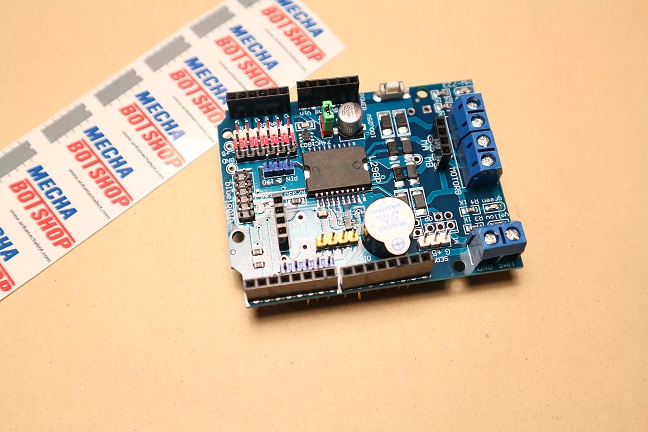I. Overview:
298P Shield DC motor driver adopts L2 9 8 P, an excellent driver chip for LGS's excellent high-power motor, which can directly drive 2 straight
The current motor has a drive current of 2 A and the motor output is protected by 8 high-speed Schottky diodes. The circuit wiring is reasonable and both
With the placement of the component pieces, the laminate design can be directly plugged into the Arduino.
The L 2 9 8 PS hield DC motor driver has a PWM speed control mode. The motor can be powered by the Arduino VIN input or the connection on the drive.
Line input, use jumper to switch.
2. Technical parameters:
1. Logic part input voltage VD: 5 V
2. Drive part input voltage VS: VIN input 6. 5 ~ 1 2 V, PWRIN input 4. 8 ~ 2 4 V
3. Logic part operating current I ss: ≤3 6 m A
4. Drive part operating current I o: ≤ 2 A
5. Maximum power dissipation: 2 5 W (T = 7 5 ° C)
6. Control signal input level: High level: 2. 3 V ≤ V in ≤ 5 V Low level: - 0 . 3 V ≤ V in ≤ 1 . 5 V
7. Working temperature: - 2 5 ° C ~ +1 3 0 ° C
8. Drive: Dual high power H-bridge drive
3. Features:
1. With L 2 9 8 P motor driver chip on board, directly use the digital IO port of the motherboard ( D10 .D11. D12. D13), no need for cumbersome wiring.
2. Onboard buzzer (D4), you can set the reversing alarm ringtone.
3. Convenient motor interface, can be divided into two motor outputs.
4. Two-way Bluetooth interface, can be plugged directly, no wiring required.
5. Out of D 2 , D 3 , D 5 , D 6 , D 7 , D 9 , D seven unoccupied digital interfaces.
6. Out of A 0 - A 5 six analog interfaces.
7. Forward and reverse steering have indicators.
Test code
Int E1 = 10;
Int M1 = 12;
Int E2 =11;
Int M2 = 13;
Void setup()
{
pinMode(M1, OUTPUT);
pinMode(M2, OUTPUT);
}
Void loop()
{
{ int value;
For(value = 0 ; value <= 255; value+=5)
{
digitalWrite(M1,HIGH);
digitalWrite(M2, HIGH);
analogWrite(E1, value); //PWM speed regulation
analogWrite(E2, value); //PWM speed regulation
Delay(30);
}
Delay(1000);}
{ int value;
For(value = 0 ; value <= 255; value+=5)
{
digitalWrite(M1, LOW);
digitalWrite(M2, LOW);
analogWrite(E1, value); //PWM speed regulation
analogWrite(E2, value); //PWM speed regulation
Delay(30);
}
Delay(1000);}
}
Download the code to the ARDUINO control board, plug in our L298P-shield, connect the external power supply, and your motor will be able to move.
Technical specifications:
1. Logic part input voltage VD: 5V
2. Drive part input voltage VS: VIN input 6.5~12V, PWRIN input 4.8~35V
3. Logic part working current Iss: <36mA
4. Drive part of the operating current Io: <2A
5. Maximum power dissipation: 25W (T=75°C)
6. Control signal input level: high level 2.3V
7. Working temperature: -25+130 °C
8. Hardware interface: 5.0mm pitch terminal
9. With fixed buckle, and can access control signals through the array
10. Drive form: dual high power H-bridge drive
11. Pin occupation: D4~D7 direct drive motor
12. Support PWM / PLL mode motor speed control
13. Size: 68*53mm














